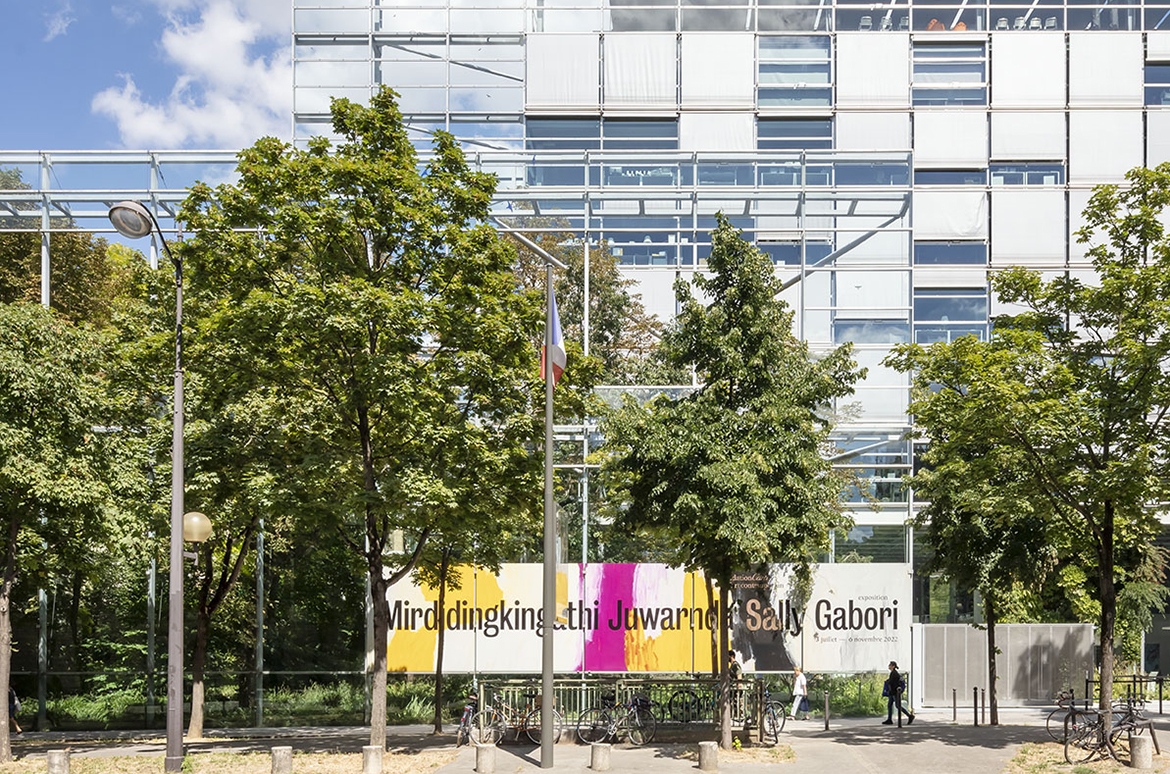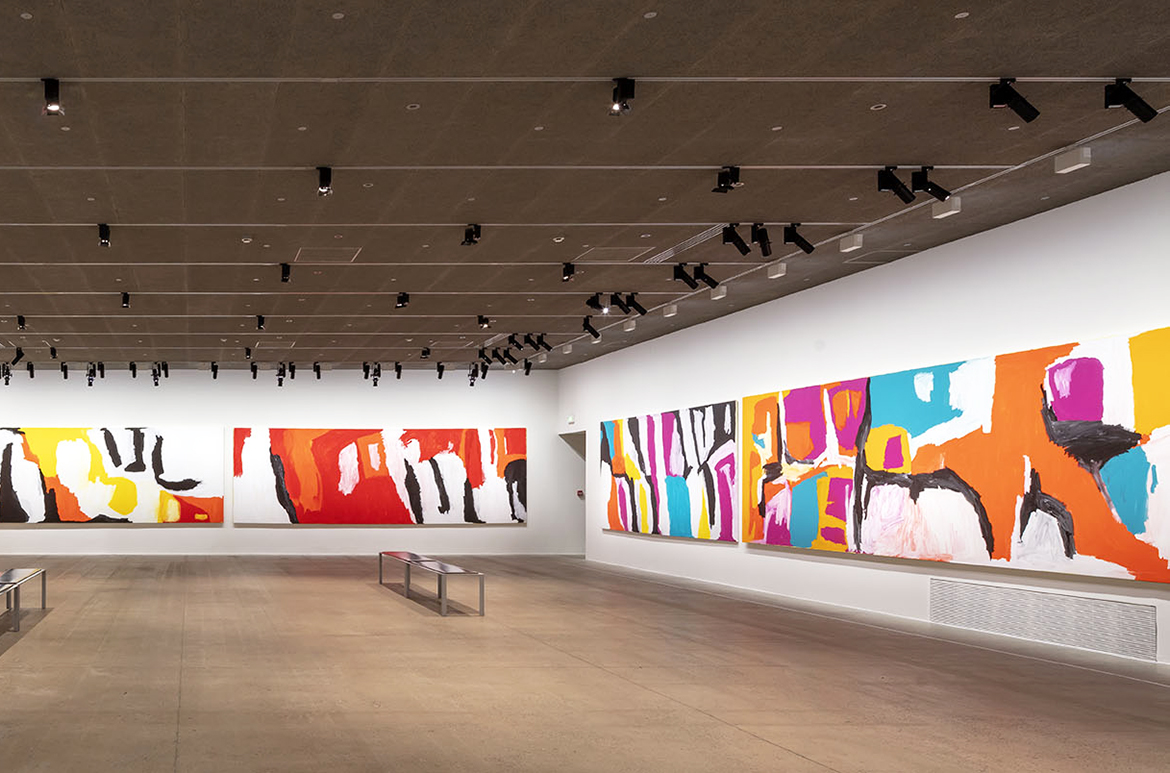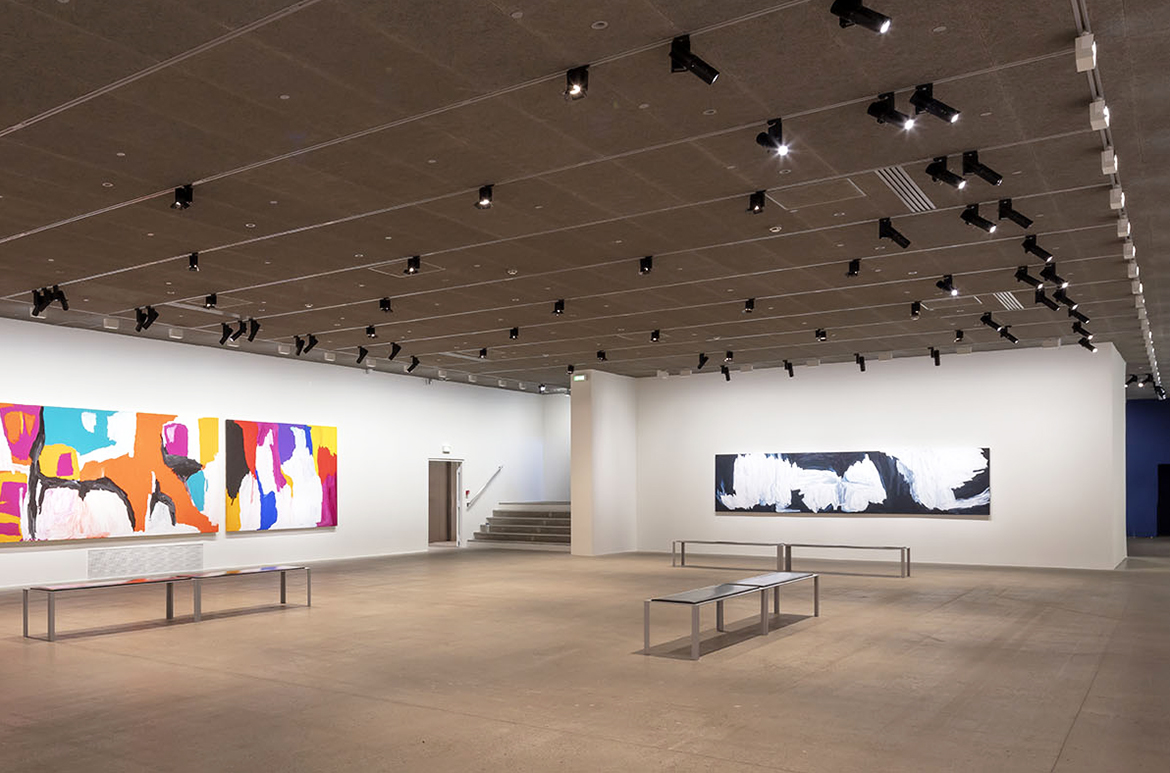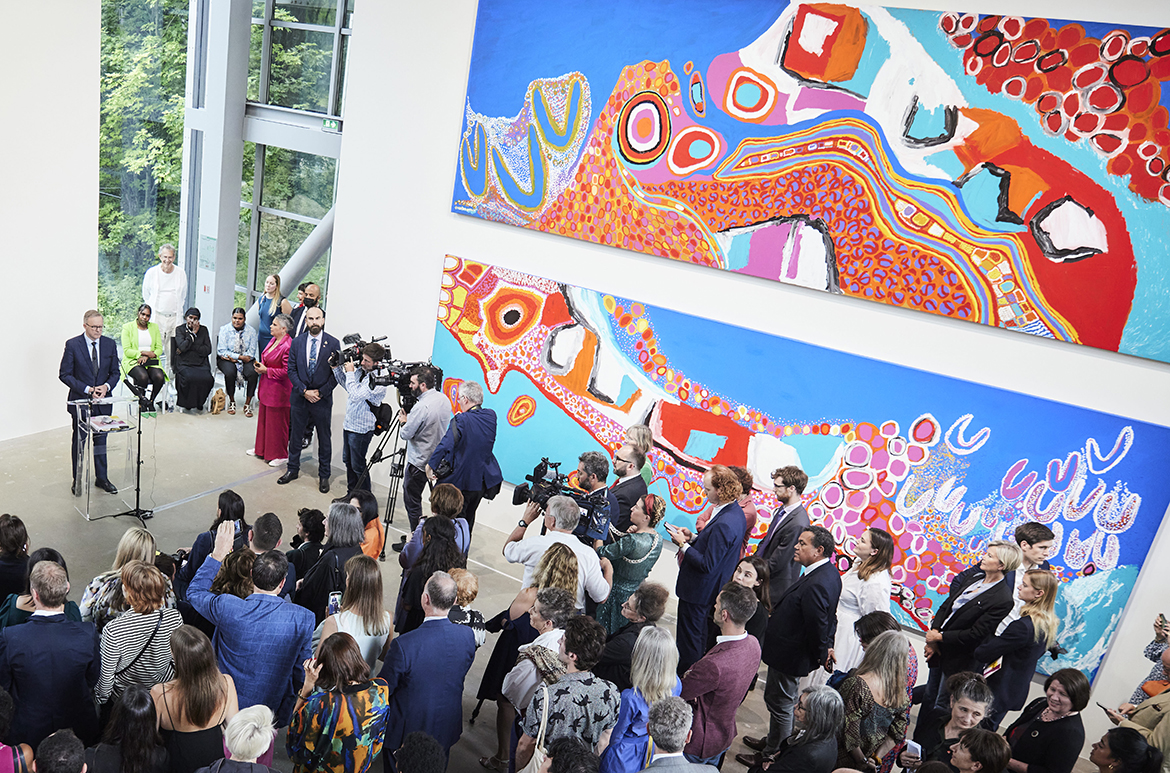In 2022 Mirdidingkingathi Juwarnda Sally Gabori (c.1924-2015) was named one of Queensland’s Greats, the awards this year recognising a contemporary Queensland artist who made a significant international impact in the art world. Sally Gabori is also having her first major solo international exhibition at the Fondation Cartier pour l’art contemporain, opened by Australian Prime Minister Anthony Albanese. This major self-titled exhibition ‘Mirdidingkingathi Juwarnda Sally Gabori’ is on view in Paris from 3 July until 6 November 2022 with significant loans from QAGOMA. To celebrate the first solo exhibition of Gabori outside Australia, the Fondation Cartier has dedicated an online project to Gabori’s life and work.
Explore the relationships between Sally Gabori’s artworks, land and culture


Mirdidingkingathi Juwarnda Sally Gabori
Sally Gabori was born around 1924 near a small creek on the southern side of Bentinck Island, in the southern Gulf of Carpentaria, Far North Queensland. This small island, measuring around 16 by 18 kilometres, is the Dulka Warngiid, the land of all, of the Kaiadilt people.
DELVE DEEPER: The life and art of Sally Gabori
Gabori lived an entirely traditional life for her first 23 years, moving between her family’s main homeland sites and living according to an unbroken ancestral culture. In 1948, following devastating drought, storms and a near four-metre tidal surge, she and her kin were moved to the Presbyterian Mission on nearby Mornington Island. She remained there in enforced exile until the 1980s when the Land Rights movement saw small outstations erected on Bentinck. Remoteness and lack of infrastructure meant, however, that Gabori would spend most of her life away from her country. Yet she always kept it in her heart, singing its songs with family and maintaining Kaiadilt culture.
In 2005 Gabori was introduced to painting around the age of eighty and nearly 60 years after being separated from her country, when her unique style, vision and story captured the imagination of the art world. Mixing wet paints on canvas to create tonal shifts, she evoked geological or ecological flux on Bentinck, such as the transition from land to sea, while hard-edged colour contrasts describe structures that for thousands of years have remained unchanged, such as the ancient rock-walled fish traps, or the cliffs bordering the ocean. Sally Gabori’s paintings resonate with the colours and textures of Kaiadilt country and the intensity and complexities of her history and memories.
The 144 page illustrated publication Mirdidingkingathi Juwarnda Sally Gabori: Dulka Warngiid / Land of All is available from the QAGOMA Store and online

Sally Gabori ‘Dibirdibi Country’ 2008


Sally Gabori ‘Dibirdibi Country’ 2012


Sally Gabori ‘Makarrki — King Alfred’s Country’

Acknowledgment of Country
The Queensland Art Gallery | Gallery of Modern Art acknowledges the Traditional Owners of the land on which the Gallery stands in Brisbane. We pay respect to Aboriginal and Torres Strait Islander Elders past and present and, in the spirit of reconciliation, acknowledge the immense creative contribution First Australians make to the art and culture of this country.
It is customary in many Indigenous communities not to mention the name or reproduce photographs of the deceased. All such mentions and photographs on the QAGOMA Blog are with permission, however, care and discretion should be exercised.
Featured image: Opening of ‘Mirdidingkingathi Juwarnda Sally Gabori’, Fondation Cartier pour l’art contemporain, Paris, 2022 / Photograph: © Valentin Le Cron
#QAGOMA


